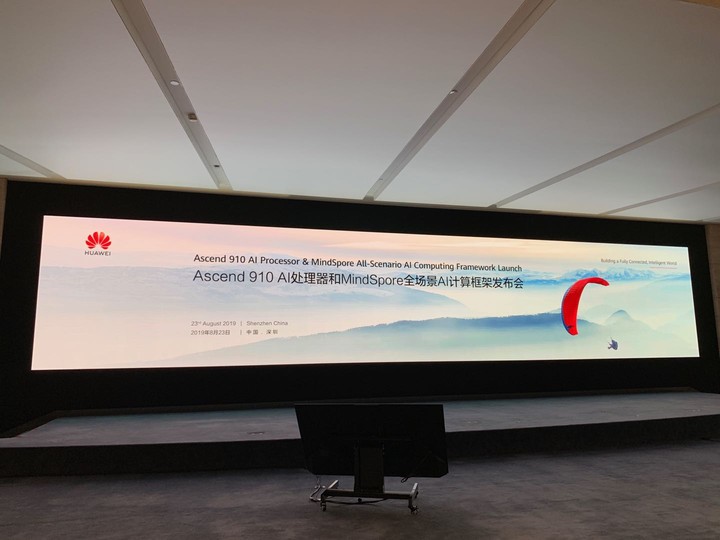On August 23, Huawei officially released a commercially available AI chip SF 910 (Ascend 910).
Huawei Shengteng 910 is a product of the Ascend-Max series. Huawei released the specifications of the chip in October 2018.
The Ascension 910 uses the 7nm+ EUV process and uses the Da Vinic DaVinci architecture. Huawei officially mentioned that the computing power of the Soaring 910 is equivalent to 50 current CPUs, and its training speed is 50%-100% stronger than the current strongest AI chip.
According to Huawei official test data, the Shengteng 910 has reached the design specifications. The FP16 of the Shengteng 910 has a computing power of 256 Tera-FLOPS and the INT8 has a computing power of 512 Tera-OPS. Importantly, the power consumption required for the 910 to reach the specification is only 310W, which is significantly lower than the 350W of the design specification.

In this regard, Huawei’s rotating chairman Xu Zhijun represented at the press conference:
Shengdeng 910 The overall technical performance exceeded expectations, and the Shengteng 910 has been used for actual AI training tasks. For example, in the typical ResNet50 network training, the Ascendant 910 works with MindSpore, which shows nearly 2x performance improvement over the existing mainstream training single card with TensorFlow.
In the interview after the meeting, Xu Zhijun also said that the 910 is only the Ascend-Max series, and the Ascend series AI chips are also available in the Mini, Lite, Tiny and Nano series.

In the future, the Ascend Nano series of AI chips will be put into smart wear, and the Tiny series of AI chips will be combined with the Kirin 990 processing chip, and will be integrated into smart products and some smart furniture products in the future.
In addition to the Rising 910, Huawei also released the full-scenario AI computing framework MindSpore today.
MindSpore’s biggest feature is the ability to implement full-scenario support. It can be deployed independently for all scenarios for different operating environments. The MindSpore framework achieves greater privacy protection by coordinating processed gradients and model information without privacy information.
MindSpore also integrates model protection into the AI framework to improve the security and reliability of the model. By natively adapting each scene including end, edge and cloud, and being able to collaborate on demand, the model development time is significantly reduced by implementing AI algorithms or code.
In addition, MindSpore can reduce core code by 20% and increase overall efficiency by 50%.

For the AI algorithm framework, Huawei proposed early on the fully connected conference 2018, the AI framework needs to achieve development-friendly, efficient operation, lower development threshold, protect user privacy in multiple scenarios, and also need to adapt to the include, Every scene like the edge and the cloud. As seen in the results released today, MindSpore has achieved Huawei’s expected goals.
In addition, MindSpore is compatible with Ascend series AI chips, and can support other processors such as GPU and CPU. In order to further promote AI applications, Huawei announced at the meeting that MindSpore will be open sourced in the first quarter of 2020.

▲ Image from: 澎湃News
Also, Huawei’s rotating chairman Xu Zhijun also announced at the meeting that Huawei’s fully-connected conference 2019 will be held on September 18th. At that time, Huawei will also release other new products related to AI.
In the follow-up visit, Xu Zhijun said that the upgrades of the Shengteng 910 and the Shengteng 310, the Shengteng 920 and the Shengteng 320 will also be released in 2020.
The title map is from:澎湃新闻